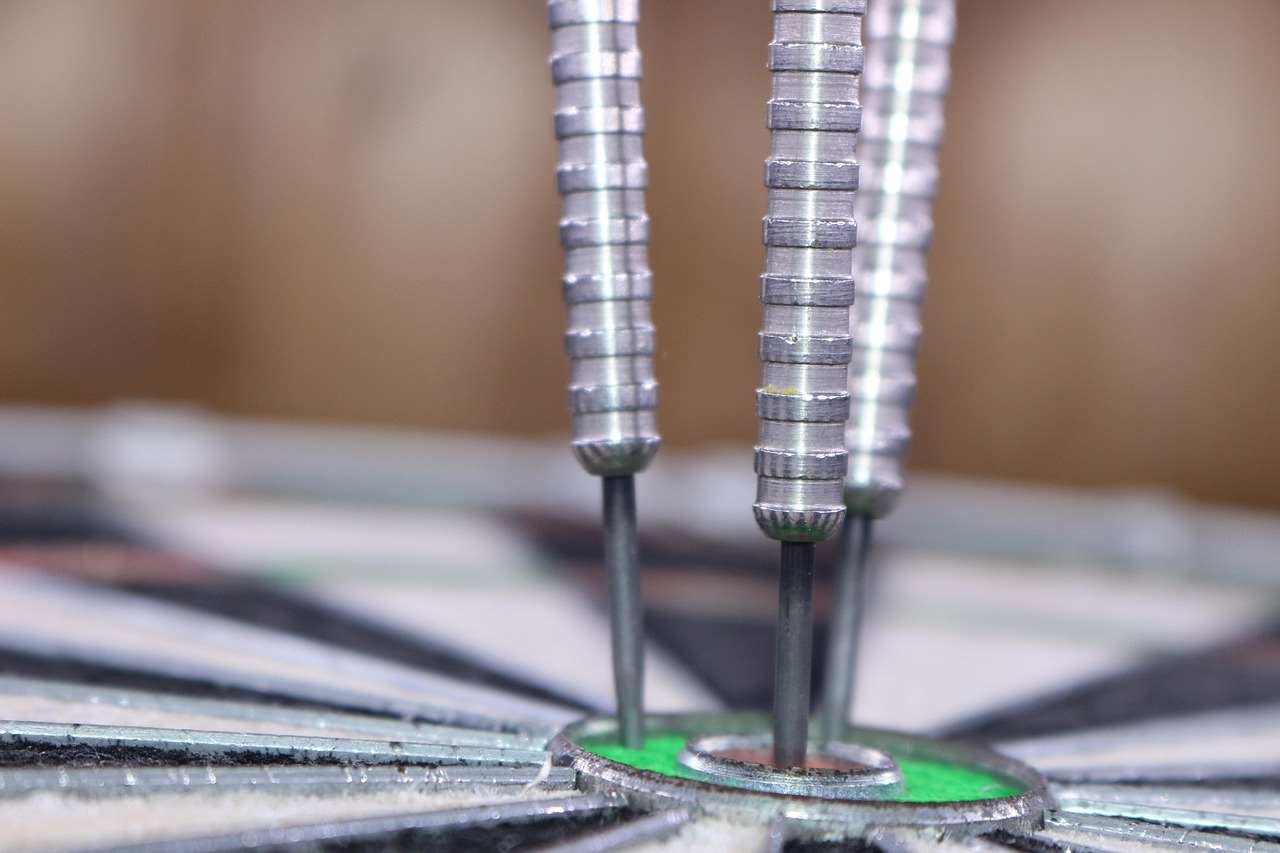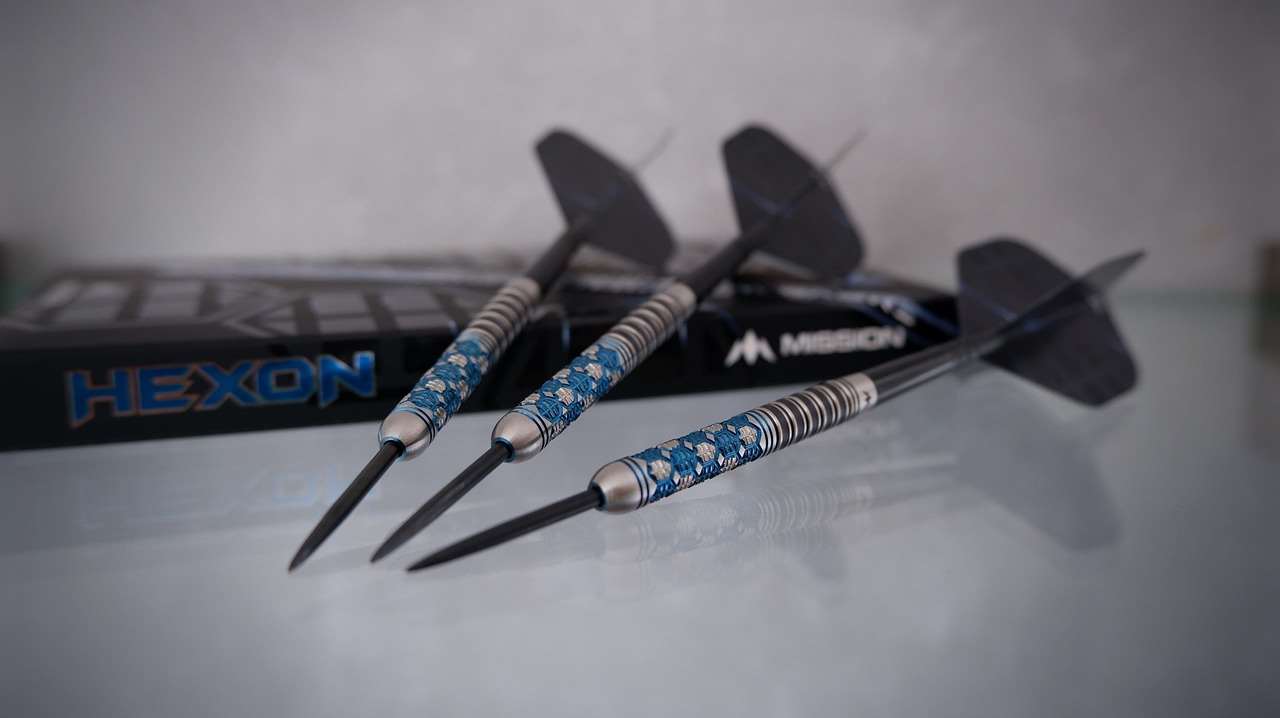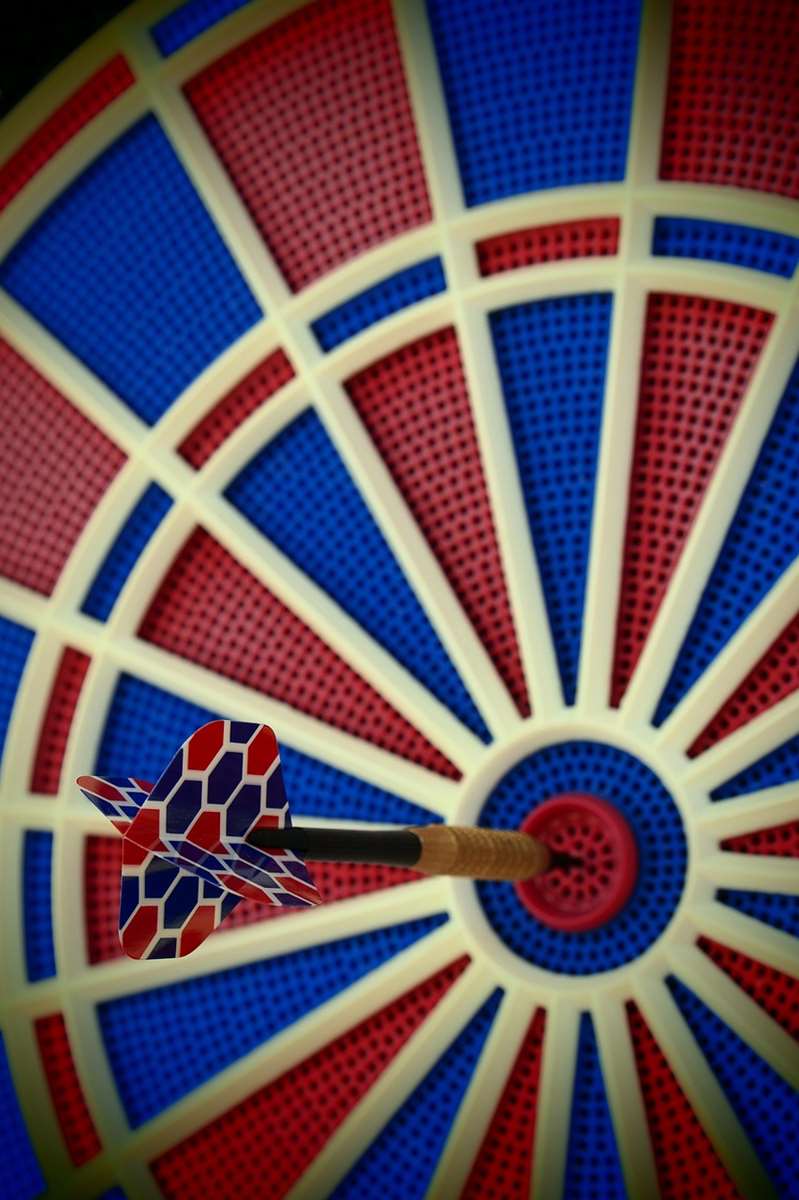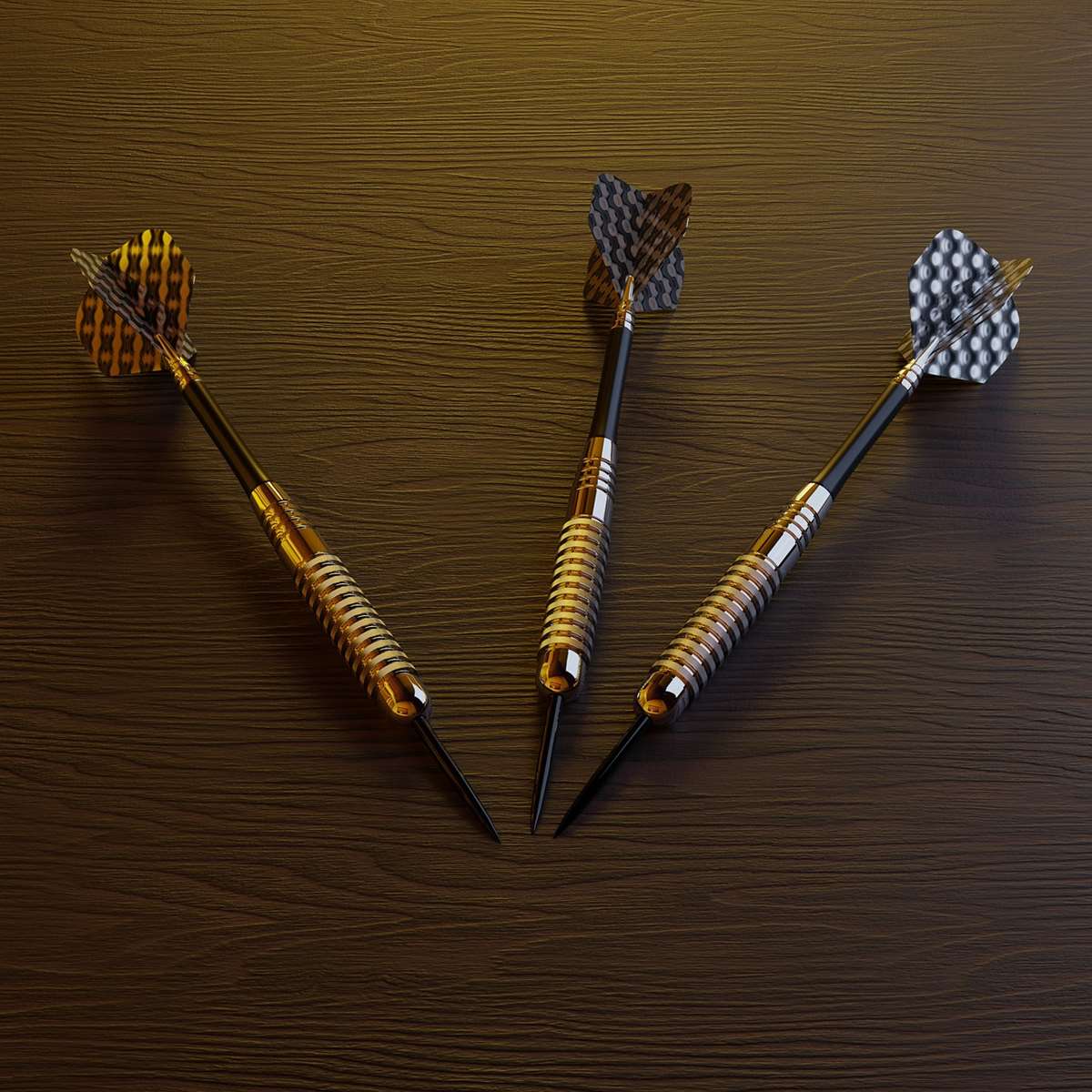The darts product development cycle is a multi-stage process, essential for creating innovative and successful darts equipment that meets player needs and pushes the boundaries of the sport. This article will guide you through each phase, from initial concept to market launch, offering insights into the considerations and strategies involved in crafting top-tier darts products.
⚠️ Still Using Pen & Paper (or a Chalkboard)?! ⚠️
Step into the future! The Dart Counter App handles all the scoring, suggests checkouts, and tracks your stats automatically. It's easier than you think!
Try the Smart Dart Counter App FREE!Ready for an upgrade? Click above!
Understanding the Darts Product Development Cycle
The darts product development cycle, much like any other product development process, involves a structured series of steps designed to bring a new or improved dart, dartboard, or accessory to market. Understanding each stage is vital for manufacturers looking to stay ahead of the competition and cater to the evolving needs of darts players, from casual enthusiasts to seasoned professionals. The process requires market research, innovative design, rigorous testing, and effective marketing to achieve success. The ultimate goal is to create a product that not only performs well but also resonates with the target audience and drives sales.

Key Stages in the Darts Product Development Cycle
The darts product development cycle can be broken down into several distinct stages, each with its own set of objectives and challenges. These typically include:
- Ideation: This is where the initial concept for a new product is generated. It often involves brainstorming sessions, market analysis, and identifying unmet needs in the darts community.
- Research and Development: This stage focuses on exploring the feasibility of the concept, conducting technical research, and developing prototypes. Material selection and engineering considerations are crucial here.
- Design and Prototyping: Creating detailed designs, building functional prototypes, and testing different variations to refine the product’s performance and aesthetics. This includes things like dart barrel design, flight materials, and shaft length.
- Testing and Refinement: Rigorous testing by both in-house experts and external players. Feedback is collected and used to further improve the product’s design and performance. This often involves repeated iterations.
- Manufacturing: Setting up the production process, sourcing materials, and ensuring quality control throughout the manufacturing process.
- Marketing and Launch: Developing a marketing strategy, creating promotional materials, and launching the product to the target audience.
- Post-Launch Evaluation: Monitoring sales, gathering customer feedback, and making necessary adjustments to the product or marketing strategy based on real-world performance.
Each of these stages is interdependent and requires careful planning and execution to ensure a successful product launch. Effective communication and collaboration between different teams are essential throughout the entire cycle.
Ideation and Market Research: Identifying Opportunities
The initial stage of the darts product development cycle involves generating new ideas and identifying potential market opportunities. This requires a deep understanding of the darts market, including current trends, player preferences, and competitive landscape. It’s also essential to understand the Business of Darts, the financial aspects, and overall market dynamics that can influence product success.
Gathering Insights into Player Needs
Effective market research is crucial for identifying unmet needs and understanding player preferences. This can involve:
- Surveys and Questionnaires: Gathering quantitative data on player demographics, skill levels, and product preferences.
- Focus Groups: Conducting qualitative research to gain deeper insights into player motivations, needs, and perceptions of existing products.
- Competitive Analysis: Studying the strengths and weaknesses of competing products to identify opportunities for differentiation.
- Trend Analysis: Monitoring emerging trends in the darts world, such as new materials, design innovations, and playing styles.
By gathering comprehensive market intelligence, manufacturers can identify opportunities to develop products that meet specific player needs and gain a competitive advantage. This intelligence will inform the subsequent stages of the darts product development cycle.

Design and Prototyping: Bringing Ideas to Life
Once a product concept has been identified, the next stage involves designing and prototyping the product. This requires a combination of creativity, technical expertise, and attention to detail. The goal is to create a functional prototype that can be tested and refined to meet performance and aesthetic requirements.
Key Considerations in Dart Design
Several key factors must be considered during the dart design process:
- Barrel Design: The shape, weight, and grip of the barrel significantly impact a player’s throwing style and accuracy.
- Shaft Length and Material: The length and material of the shaft affect the dart’s stability and flight characteristics.
- Flight Shape and Material: The shape and material of the flight influence the dart’s trajectory and aerodynamics.
- Point Type: The type of point (steel tip or soft tip) depends on the type of dartboard being used.
Using computer-aided design (CAD) software, designers can create detailed 3D models of the dart and simulate its performance under different conditions. Rapid prototyping techniques, such as 3D printing, allow for the creation of physical prototypes that can be tested and refined quickly and efficiently. The design must balance performance considerations with aesthetic appeal to create a product that is both functional and visually appealing.
Testing and Refinement: Ensuring Optimal Performance
The testing and refinement stage is crucial for ensuring that the final product meets the desired performance standards. This involves rigorous testing by both in-house experts and external players, gathering feedback, and making necessary adjustments to the product’s design and construction. This phase helps to optimize dart flight and target accuracy. Related keywords here include the use of `tungsten darts` and `brass darts`.
Methods for Testing Darts Products
Various methods can be used to test darts products:
- Laboratory Testing: Conducting controlled experiments to measure the dart’s weight, balance, and aerodynamic properties.
- Field Testing: Evaluating the dart’s performance in real-world playing conditions, using both experienced and novice players.
- User Feedback: Gathering feedback from players on the dart’s feel, grip, and overall performance.
- Durability Testing: Assessing the dart’s resistance to wear and tear, including impact testing and fatigue testing.
The feedback gathered during testing is used to refine the product’s design and construction. This may involve making adjustments to the barrel shape, shaft length, or flight material. The process is iterative, with multiple rounds of testing and refinement until the desired performance is achieved. This stage is a critical investment in the overall darts product development cycle, as it ensures the final product is of the highest quality and meets the needs of its target audience.

Manufacturing and Quality Control: Delivering Consistent Quality
Once the design has been finalized, the next step is to manufacture the product. This involves setting up the production process, sourcing materials, and implementing quality control procedures to ensure that every product meets the required standards. Precision manufacturing is essential for maintaining consistency and delivering high-quality darts. This also effects `electronic dartboards` and `soft tip darts`.
Ensuring Quality Throughout the Production Process
Quality control procedures should be implemented at every stage of the manufacturing process:
- Material Inspection: Inspecting raw materials to ensure that they meet the required specifications.
- In-Process Inspection: Monitoring the production process to identify and correct any defects.
- Final Inspection: Inspecting finished products to ensure that they meet all quality standards before they are shipped.
- Statistical Process Control: Using statistical methods to monitor and control the manufacturing process.
By implementing rigorous quality control procedures, manufacturers can minimize defects, reduce waste, and ensure that every product meets the required standards of quality and performance. This helps to build trust with customers and maintain a strong brand reputation.
Marketing and Launch: Reaching the Target Audience
The marketing and launch stage is crucial for introducing the new product to the target audience and generating sales. This involves developing a marketing strategy, creating promotional materials, and utilizing various channels to reach potential customers. Consideration must also be given to things like darts tv rights value to enhance the visibility of the product.
Strategies for Marketing Darts Products
Several marketing strategies can be used to promote darts products:
- Online Advertising: Using search engine optimization (SEO), pay-per-click (PPC) advertising, and social media marketing to reach potential customers online.
- Content Marketing: Creating valuable content, such as blog posts, videos, and tutorials, to attract and engage potential customers.
- Sponsorships and Partnerships: Partnering with professional darts players and organizations to promote the product.
- Trade Shows and Events: Exhibiting at trade shows and events to showcase the product and network with potential customers.
- Retail Distribution: Selling the product through retail channels, such as sporting goods stores and online retailers.
The marketing strategy should be tailored to the specific target audience and the product’s unique selling points. Effective marketing can create excitement and anticipation for the new product, driving sales and building brand awareness. Proper market strategy and budgeting should be considered within the darts product development cycle. This can include dartboard cabinets or even dart accessories.

Post-Launch Evaluation: Monitoring Performance and Making Adjustments
After the product has been launched, it is important to monitor its performance and gather customer feedback. This information can be used to make necessary adjustments to the product or marketing strategy, ensuring continued success. This step is integral to the complete darts product development cycle.
Gathering Customer Feedback and Making Improvements
Several methods can be used to gather customer feedback:
- Online Reviews and Ratings: Monitoring online reviews and ratings to identify areas for improvement.
- Customer Surveys: Conducting surveys to gather feedback on customer satisfaction and product performance.
- Social Media Monitoring: Monitoring social media channels to identify customer comments and concerns.
- Sales Data Analysis: Analyzing sales data to identify trends and patterns in customer behavior.
The feedback gathered during post-launch evaluation is used to make necessary adjustments to the product or marketing strategy. This may involve making design changes, improving product quality, or refining the marketing message. The goal is to continuously improve the product and meet the evolving needs of customers. Continuous Improvement is key for longevity in the darts product market.
Future Trends in Darts Product Development
The darts product development cycle is continuously evolving, driven by technological advancements, changing player preferences, and increasing competition. Some emerging trends in darts product development include:
- Smart Darts: Darts equipped with sensors that track performance metrics, such as speed, accuracy, and spin rate.
- Customizable Darts: Darts that can be customized to meet individual player preferences, such as weight, balance, and grip.
- Sustainable Materials: Using environmentally friendly materials in the manufacturing process.
- Advanced Aerodynamics: Incorporating advanced aerodynamic principles into dart design to improve flight characteristics.

By staying abreast of these trends, manufacturers can develop innovative products that meet the evolving needs of players and gain a competitive edge in the market. Adapting to future trends will ensure success in future iterations of the darts product development cycle.
Conclusion: Mastering the Darts Product Development Cycle
The darts product development cycle is a complex but essential process for creating successful darts products. By understanding each stage of the cycle, from ideation to post-launch evaluation, manufacturers can develop innovative products that meet player needs and drive sales. Remember that effective market research, rigorous testing, and continuous improvement are key to success. Now that you understand the lifecycle, consider researching existing darts products to better understand how to integrate these steps into your own potential business. Learn about `steel tip dartboards` and `electronic dartboards` to see how product lifecycles have impacted their current state. Ready to take your knowledge to the next level? Explore our other articles about the Business of Darts and discover how you can leverage your understanding of the darts product development cycle to excel in this exciting industry!
Hi, I’m Dieter, and I created Dartcounter (Dartcounterapp.com). My motivation wasn’t being a darts expert – quite the opposite! When I first started playing, I loved the game but found keeping accurate scores and tracking stats difficult and distracting.
I figured I couldn’t be the only one struggling with this. So, I decided to build a solution: an easy-to-use application that everyone, no matter their experience level, could use to manage scoring effortlessly.
My goal for Dartcounter was simple: let the app handle the numbers – the scoring, the averages, the stats, even checkout suggestions – so players could focus purely on their throw and enjoying the game. It began as a way to solve my own beginner’s problem, and I’m thrilled it has grown into a helpful tool for the wider darts community.